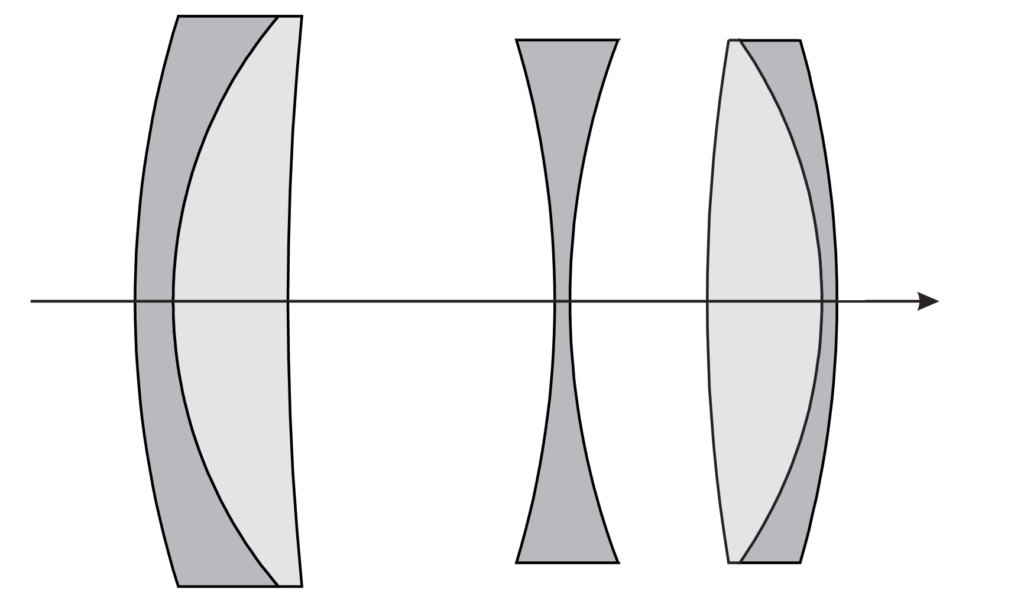The Heliar
The Heliar.
More than half a century after its calculation, this lens is still the preferred choice of professional and specialist photographers worldwide.
The Heliar was designed in 1900 by Dr Hans Harting (1868-1951), then technical director of the Voigtländer company in Braunschweig. Voigtländer patented the Heliar on 1 December 1900 as a “chromatically, spherically and astigmatically corrected lens”. This was followed on 10 June 1902 by an additional patent.
The Heliar is an asymmetric lens consisting of three parts. It has a biconcave central lens and a double lens at the front and back. The double insertion of the collecting cemented surface made the Heliar a five-lens system. The aperture is located in the posterior air space.

Before the turn of the century, lenses with a focal length of more than 20 cm were used for studio photography. As these lenses had a maximum aperture of 1:6.3, there was a need for a lens with a larger aperture ratio. It was to be a lens which, due to an astigmatically flattened field of view and greater brightness than the collinear H series, would permit universal use by the professional photographer, i.e. with a short exposure, a sufficiently large plate for all purposes of studio photography.
In Harting’s opinion, the relative aperture for a suitable studio lens in terms of brightness and depth of field was 1:4.5. In addition to the precise correction of astigmatism and field curvature, he placed great emphasis on the complete elimination of spherical aberration of bundles not parallel to the optical axis, known as coma.
It ensures a black, strong image even at the outer edge of the field of view, and the plate, even at full aperture, is completely free from the well-known veil of light that obscures the image of many light-intensive instruments. This is of course of great value in portrait photography, as it enhances the brilliance of the image.
The first Heliars were made in magnaluminium mounts. To make it easier for the photographer to read the aperture, a thin metal sleeve was slid over the lens body, guiding the iris diaphragm and widening at the head to form a sun shade. The aperture was then adjusted on the front at the sun shade. By shortening the lens mount and further enlarging the field of view, the Heliar was optimized in 1921 with an aperture of 1:3.5.
Shortly after the Heliar appeared in 1902, it was discovered that the lens could also be used for repro-photography. The relative aperture of the Heliar was 1:4.5 at all focal lengths, i.e. from 12 to 60 cm. This was a remarkable optical performance, especially at longer focal lengths, considering that the lens was corrected in all directions despite its enormous speed.
For reproduction photography, only the longer focal lengths were considered. The demands for sharpness over the entire plate format used were naturally higher for reproduction than for outdoor photography. This was especially true when reproducing originals that were executed as line drawings, bypassing the halftones. For halftone reproduction of similar originals, photographs, ink drawings, as required by collotype, photogravure and other positive copying processes of the time, the heliograph was particularly useful because of its extraordinary luminosity. In collotype, in particular, it was necessary not to prolong exposure times too long, otherwise the brilliance of the reproduction – the aim of line photography – would become too great, i.e. the highlights and shadows would become too hard or too glassy.
The Heliar also played an important role in amateur photography. Voigtländer used the “master lens”, as it was called at the time, in their top camera models “Superb”, “Prominent 6X9” and “Bessa H”.
For more than 50 years, the Voigtländer Heliar was regarded as one of the finest photographic lenses ever invented. Even today there are enthusiasts who would not change their Heliar for any other lens.